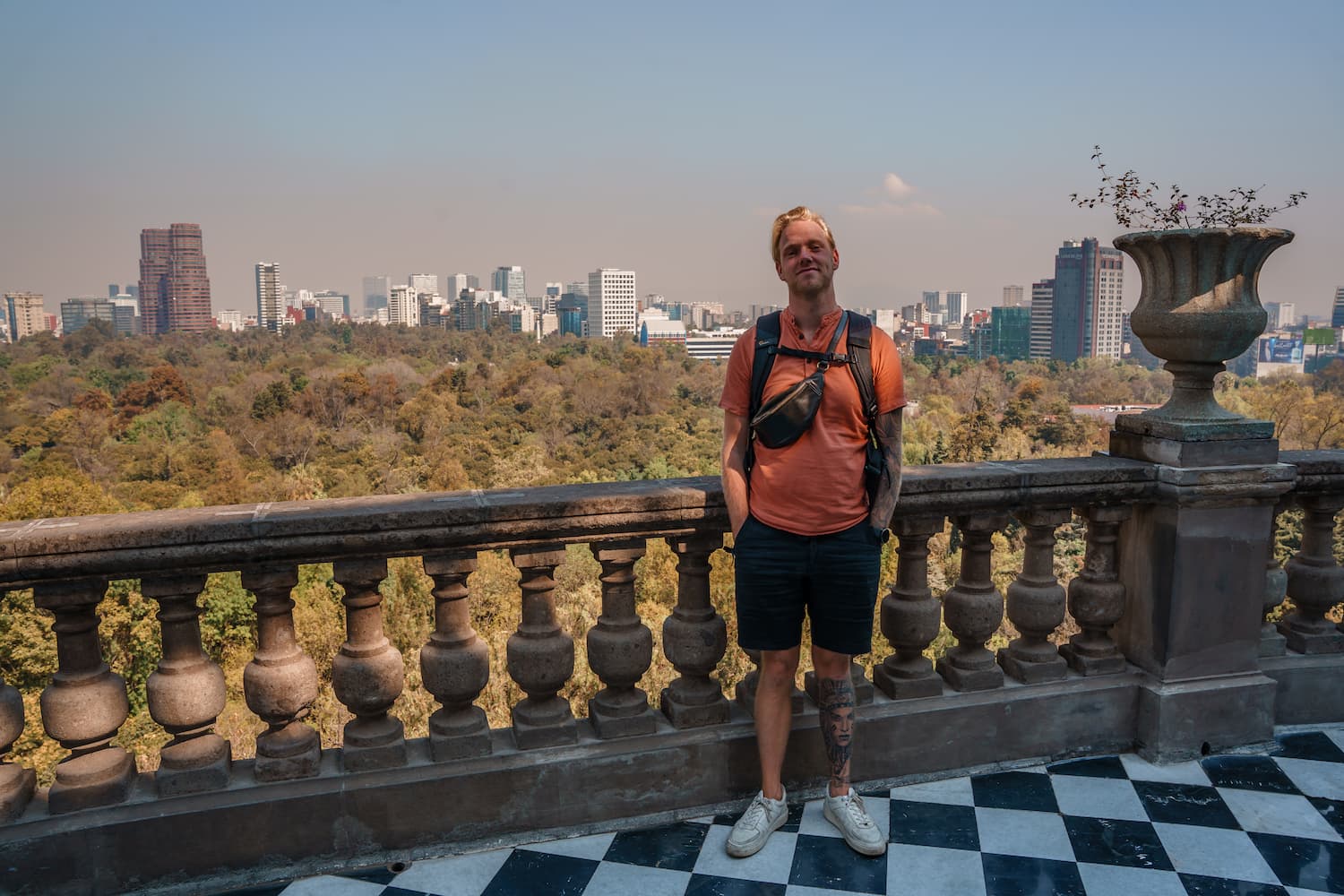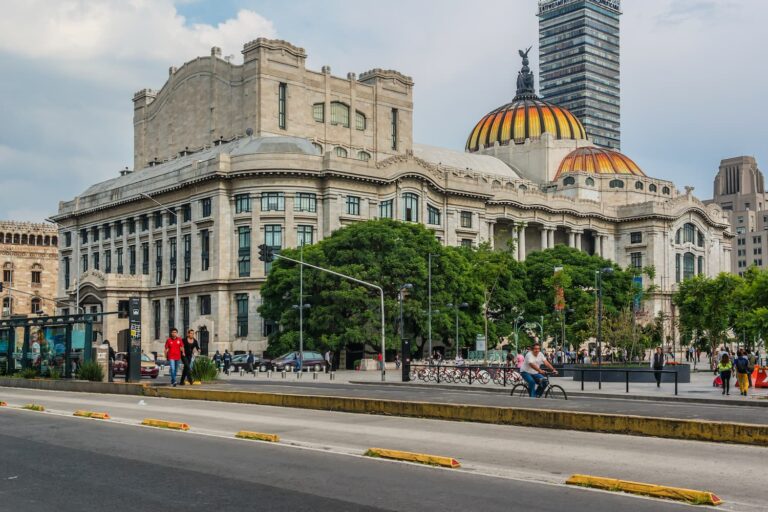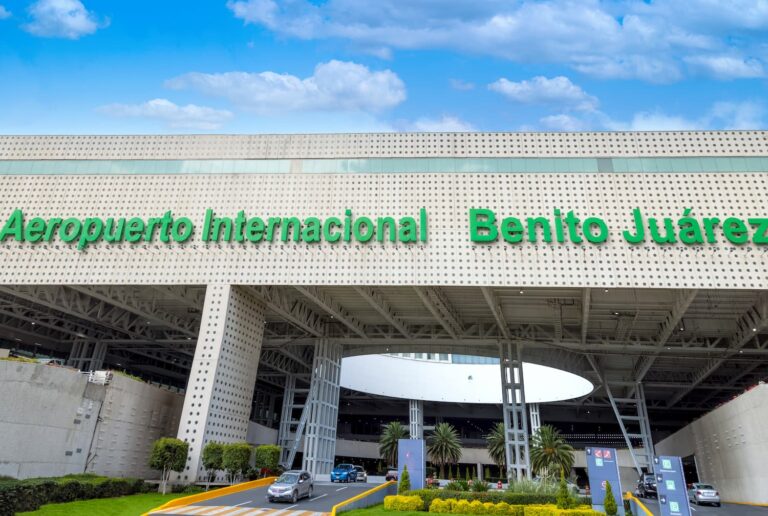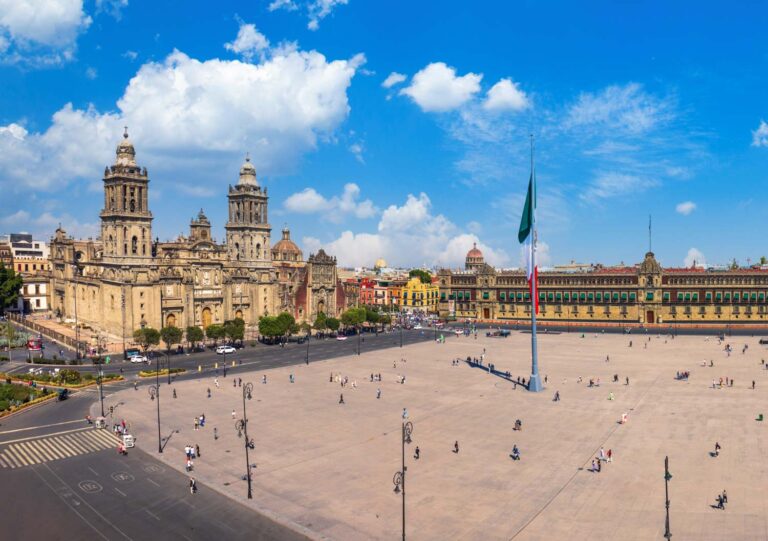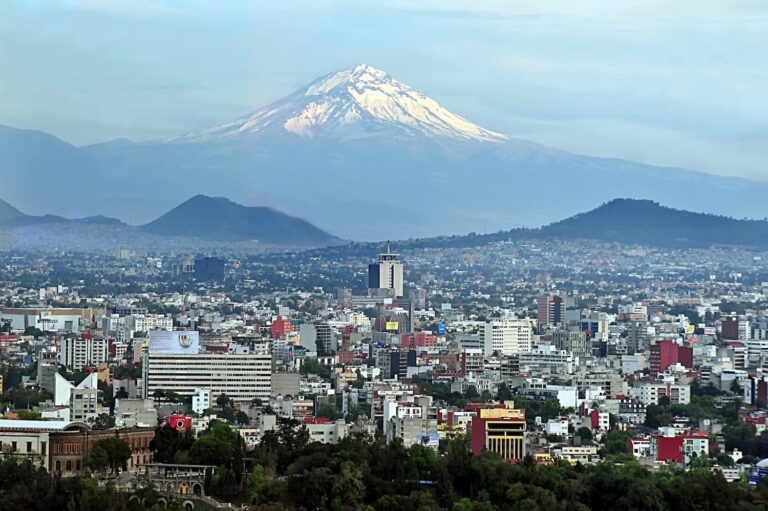Can You Get Altitude Sickness In Mexico City? Our Experience & Tips

A lot of people worry about suffering from altitude sickness in Mexico City – and understandably. If you take a look at the Mexico City altitude in feet compared to other capitals around the world, it is up there with places like Thimpu in Bhutan and Bogota in Colombia.
We now live part of our itinerant life in the Condesa Barrio of CMDX, so we know first-hand how altitude sickness can affect first-time visitors to the city, not to mention people coming from places with significantly different heights above sea level. In fact, it’s often the variance more than the absolute altitude that catches people out in Mexico City.
So, what’s the elevation of Mexico City, and how can you combat the symptoms? We’ll discuss all that and more in this post, from some handy travel tips to alleviate any minor altitude sickness ailments to more heavy-duty medicines for if you begin to feel especially ropey.
Our Experience With Mexico City Altitude Sickness
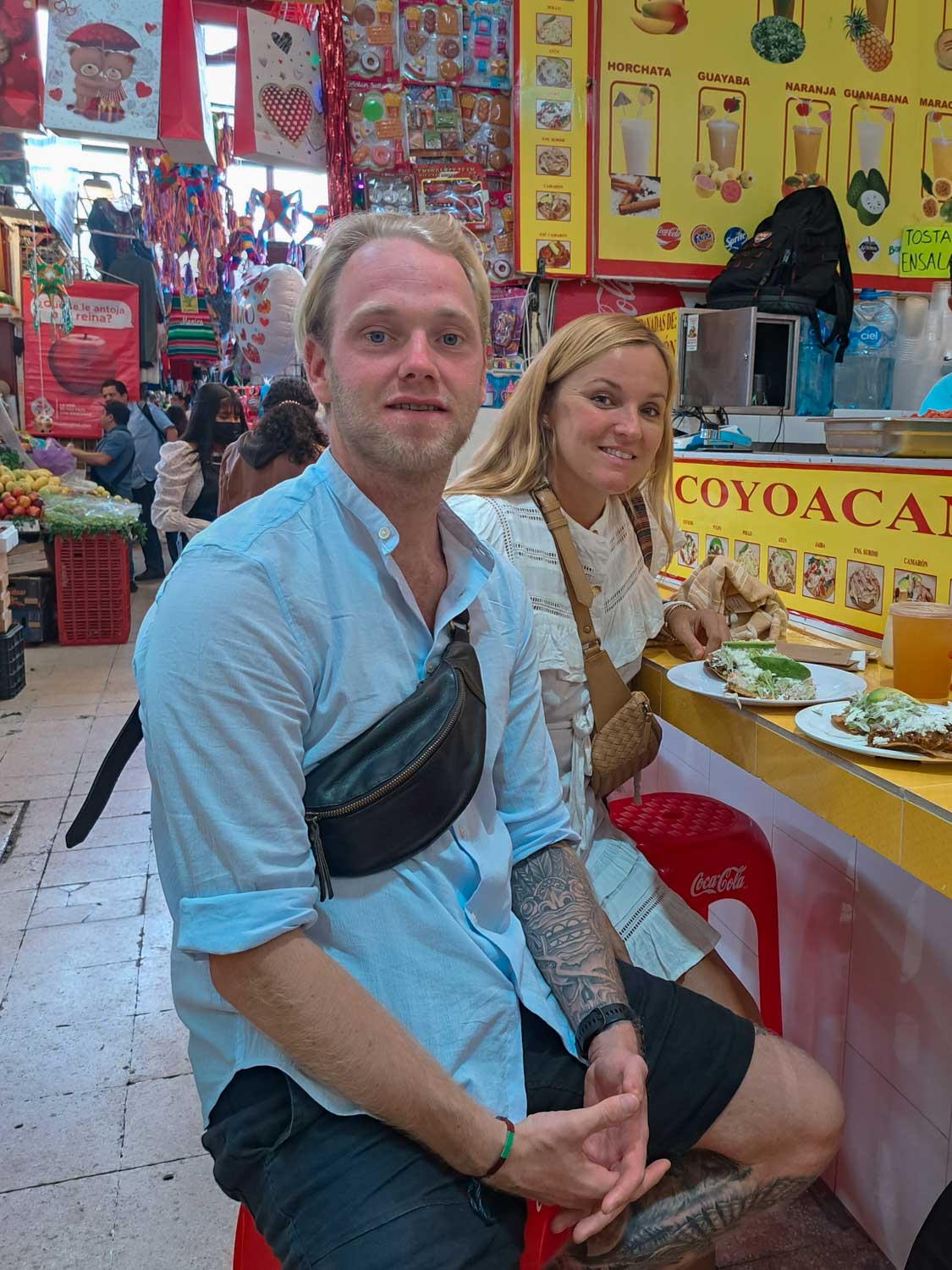
We come to Mexico City every year, and so far (touch wood), we have never had any problems with altitude sickness. On the other hand, we do have some friends who have experienced discomfort, such as headaches and nausea, when they’ve come to explore the Mexican capital with us, so we know it’s not unheard of.
Plus, in our travels to some neighbouring countries, we have been less fortunate. For example, we both experienced altitude sickness when we climbed Acatenango in Guatemala, which shoots up to 4,000 metres (13,123 feet) in height. While Robin didn’t have any serious problems apart from a raised heartbeat and heavier breathing, Mal suffered way more.
Mal was also struck down with altitude sickness while travelling through the salt flats in Bolivia, including feeling tired and nauseous, causing her to lose appetite. These flats are 3,656 metres (11,995 feet) above sea level, so a good 1,000-plus metres higher than CDMX.
What Is Mexico City Altitude Sickness?
Essentially, altitude sickness in Mexico City is caused by the relative lack of oxygen, which is due to the metropolis’ height above sea level. It can come with many symptoms, including dizziness, nausea, and a rapid heartbeat, as we’ll explain in more detail later on in this post. Fortunately, there are loads of ways to lessen the blow.
Is It Common To Get Altitude Sickness In Mexico City?
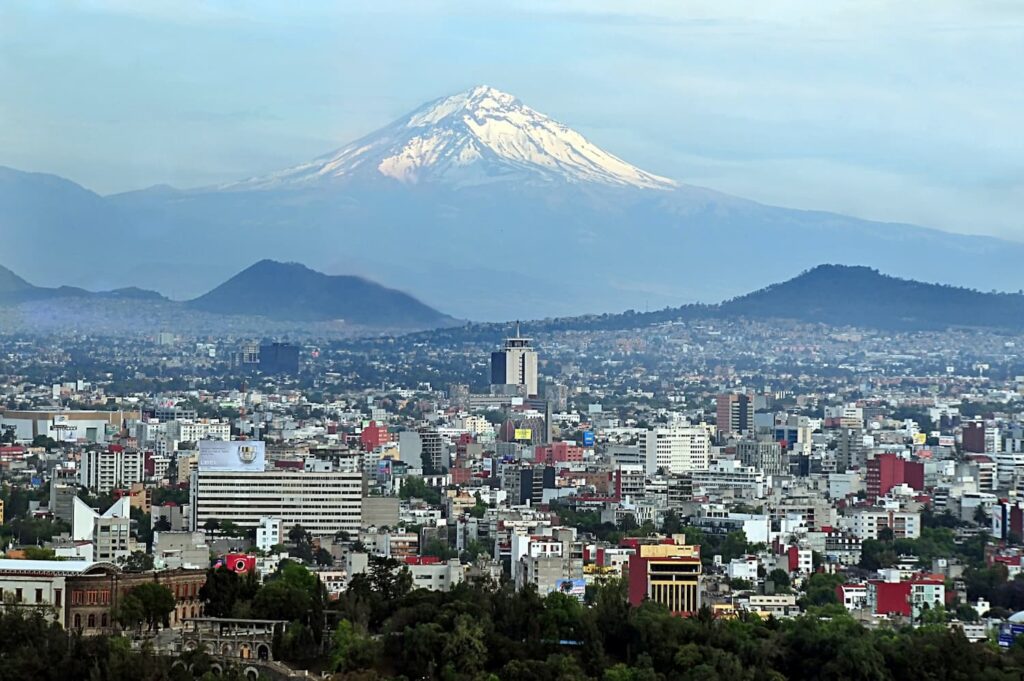
Altitude most commonly affects people once the height above sea level exceeds about 8,200 feet or 2,500 metres. So, how high is Mexico City above sea level?
Well, the elevation of Mexico City in feet is 7,350 (2,240 metres). That’s below the altitude that most people begin to experience distress due to the reduced oxygen availability. However, some unfortunate folk can find themselves enduring symptoms at as little as 5,000 feet (about 1,500 metres).
In short, most people won’t even notice the change in altitude in Mexico City – we certainly never have – but it can be a good idea to prepare, just in case.
8 Useful Tips To Prevent You From Altitude Sickness In Mexico City

While, in all likelihood, you won’t have to worry at all about feeling unwell on your visit to CDMX, there are a handful of ways you can combat the elevation in Mexico City.
#1 Gradual Ascent: Try To Arrive Early, Start Slowly
One of the easiest ways to defeat altitude sickness in Mexico City is to ascend gradually so that your body has time to adjust to the change in atmospheric pressure.
Of course, that might be pretty hard to do if you’re flying directly into CDMX, but where we do find this tip useful is if you’re planning to climb the nearby volcanoes, like Iztaccihuatl, which rises to 5,230 metres (17,160 feet) above sea level.
It’s a good idea to have at least two days in Mexico City before you scale a volcano. As an added precaution, choose a tour that is spread across multiple days so you acclimatise during the hike.
#2 Stay Hydrated
Medical studies have shown that high altitude increases fluid loss. That’s why it’s so important to drink lots of water whenever you find yourself significantly above sea level.
Many of the symptoms associated with altitude sickness are caused or exacerbated by a lack of hydration. By making sure you have plenty of water readily available, you can save yourself a headache – literally!
#3 Balanced Diet: Eat High Carbohydrate Meals, Moderate Salt Intake
It’s thought that energy usage is increased at higher altitudes due to the fact that the body needs to work harder. Carbohydrates are the energy sources of the body, so if you’re beginning to feel the effects of altitude sickness, try to include more high-quality carbs in your diet, such as oats, quinoa, and brown rice.
We’ve already mentioned how dehydration can negatively impact your experience of altitude sickness, which is why it’s a good idea to moderate your intake of salt. Instead, focus on getting more potassium through foods like avocadoes and bananas, as potassium is known to help improve fluid absorption.
#4 Medications: Consider Acetazolamide
If you find yourself severely affected by altitude sickness in Mexico City, try to get your hands on some acetazolamide. This is the most common medication recommended by doctors to alleviate symptoms of mountain sickness.
Acetazolamide tablets are usually only available via prescription, though these days, many online pharmacies can conduct virtual consultations, making it much easier for you to track down these helpful little tablets.
#5 Natural Remedies: Ginger Tea, Coca Tea
Ginger is particularly good for treating the nausea and stomach upsets that are associated with altitude sickness. We prefer to take it as tea, but it’s also possible to buy ginger chews and capsules.
Another natural remedy you can try is coca. When we were making the Inca trail to Machu Picchu, our guide gave us some coca leaves to chew to help reduce altitude-related symptoms, and we swear by it now as an effective way to counteract the feelings of sickness. It is possible to purchase the plant within Mexico, but just be aware that it is illegal in some countries.
#6 Rest And Sleep
What could be more natural than sleep to help take the edge off your altitude sickness? If you begin feeling ill, you may find that just a bit of rest will get you perked up again in no time.
Sleep, of course, also gives your body time to acclimatise, easing the transition to lower atmospheric pressure and thinner air.
#7 Easy With The Alcohol
At least for the first day or so after you arrive in Mexico City, you might want to strictly limit your alcohol intake, particularly if you know you are prone to altitude sickness.
Alcohol is dehydrating and reduces blood oxygen saturation, which means it will likely amplify any illness you feel as well as prevent your body from acclimating. Plus, the symptoms of a hangover and the symptoms of altitude sickness do overlap, so you may not realise you are suffering from the change in height above sea level if you hit it hard on arrival.
#8 Don’t Push Through
Believe us, we know it’s tempting to push through the altitude sickness, particularly if you’re only visiting CDMX for a limited period. However, any medical professional will tell you that it’s a really bad idea.
In extreme cases, trying to brush altitude sickness aside can be fatal. While that’s super unlikely to happen within the Mexican capital because the city isn’t that high above sea level, you certainly won’t acclimatise any faster if you refuse to give your body the necessary time to adjust.
What Are The Symptoms Of Altitude Sickness?

There is a whole range of altitude sickness symptoms Mexico City visitors may experience, many of which can overlap with other common holiday ailments like food poisoning or hangovers! Here are some things to keep an eye out for.
#1 Headache
One of the most common symptoms of altitude sickness in Mexico City is headaches. At high altitudes, about one in four (or 25%) of people are struck down by pain on both sides of the head.
#2 Dizziness And Lightheadedness
Feeling dizzy and disoriented is another fairly frequent result of the change in oxygen availability as you reach higher altitudes. Make sure you pause and sit down if you begin to feel lightheaded.
#3 Nausea And Vomiting
In our experience, nausea is the thing that hits hardest with altitude sickness. As we mentioned above, we got it pretty bad in Guatemala.
Make sure that if you are vomiting frequently, you don’t forget to rehydrate, as it’s really easy to lose liquids this way. Electrolyte-rich drinks or ice lollies can help if you’re struggling with plain water.
#4 Fatigue
On our trip to Bolivia’s Uyuni Salt Flat, everyone on our tour was constantly falling asleep in the car as we travelled between locations due to the altitude. Our guide had to keep waking us up when the vehicle stopped to see the various points of interest!
Obviously, at 3,700 metres (about 12,000 feet) above sea level, Uyuni is quite a bit higher than CDMX, but you get the idea. Altitude can make you feel really sleepy, so don’t feel bad if you need to indulge in more regular siestas than normal.
#5 Shortness Of Breath
As you would expect from the depletion of oxygen as you reach higher altitudes, shortness of breath is a pretty common side effect. There are some simple ways you can combat this, such as changing your posture and doing a few simple breathing exercises.
#6 Loss Of Appetite
Loss of appetite is obviously tied up with nausea. After all, who feels like demolishing a plate of tacos when you might just vomit them all back up again in a few minutes?!
Some people find it helps to go on a temporary liquid diet to at least get some much-needed nutrients into the body, or you can instead try to just have small snacks rather than large meals regularly throughout the day to pack in those helpful carbs.
#7 Insomnia
We know it sounds crazy that altitude sickness can make you feel both sleepy and insomniac, but it’s true.
The reason is that the thinner air can have a detrimental effect on your breathing patterns. This uneven breathing is more likely to cause you to wake up after short bursts of sleep so that you achieve the refreshing shut-eye your body craves.
#8 Rapid Heartbeat
To get enough oxygen at higher altitudes, your heart has to pump faster to compensate. Fortunately, as with most symptoms we’ve included here, your heart rate will usually naturally adjust with time.
#9 Cyanosis
Cyanosis is a pretty extreme result of altitude sickness and one you’re not likely to encounter in CDMX, but it never hurts to have extra awareness.
Essentially, cyanosis is when your skin begins to turn blue due to a lack of oxygen reaching the blood vessels. This can be a sign of a pretty serious problem, so if you do experience this symptom, you should seek medical assistance immediately.
What Are The Best Medicines To Use Against Altitude Sickness In CDMX?
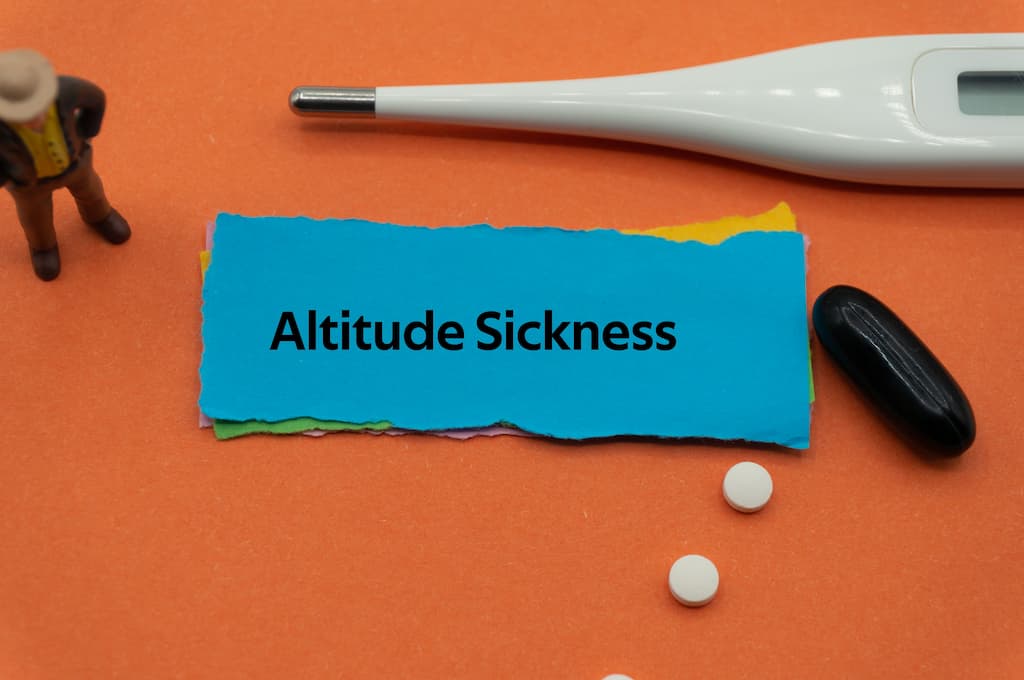
If you feel like your symptoms aren’t reducing after a day or two, it might be time to consider a medical pick-me-up. There are a couple of different options you can try, some of which can be purchased over the counter.
#1 Acetazolamide
We’ve already mentioned acetazolamide because it’s the most common way to treat prolonged symptoms of altitude sickness in Mexico City. A lot of people also refer to it as Diamox, which is one of the most popular branded versions of the drug.
You should begin taking acetazolamide between one and two days before you ascend to higher altitudes as a preventative measure.
#2 Ibuprofen or Acetaminophen
Acetazolamide usually has to be prescribed by a medical practitioner, but ibuprofen is easily obtainable and has been proven to ease headaches and nausea associated with altitude. It is overall less effective, but it’s a good option to have if you find yourself experiencing mild symptoms that you just can’t shake.
The same holds true for acetaminophen, also known as paracetamol, which can be found at any old pharmacy in CDMX.
#3 Dexamethasone
Like acetazolamide, dexamethasone usually has to be prescribed. It also has a greater number of known side effects than ibuprofen or paracetamol.
On the other hand, it works faster at relieving symptoms of acute mountain sickness, which can make it an absolute lifesaver if you’re feeling debilitatingly unwell.
#4 Nifedipine
Nifedipine isn’t used to treat altitude sickness, but another, more serious condition called high-altitude pulmonary edema (HAPE).
Like altitude sickness, HAPE is caused by the change in atmospheric pressure and oxygen levels, but it can be alleviated with a dose of nifedipine, which is why you might want to consider having some around if you visit the volcanoes surrounding CDMX, just in case.
Best Homoeopathic Remedies Against Altitude Sickness

If you are experiencing mild to moderate altitude sickness in Mexico City, there are some natural treatments that might do the trick without the need for chemical intervention.
#1 Altitude Sickness Bands
There are lots of different branded bands on the market that you can try to alleviate altitude sickness. Most of them operate on the same principle: a stud on the inside of the band activates an acupressure point on the wrist, which is thought to reduce nauseous sensations.
#2 Coca (Erythroxylum Coca)
A traditional South American method for alleviating altitude sickness, coca can be chewed or brewed into tea. Personally, we have found chewing it to be incredibly effective at reducing nausea as well as fatigue.
#3 Arsenicum Album
Arsenicum album might sound scary – arsenic is, after all, pretty well known for being poisonous! However, the element is highly diluted in this mixture. Arsenicum album is popular in homoeopathic circles for reducing nausea and combatting insomnia.
#4 Gelsemium Sempervirens
Native to parts of Mexico, gelsemium sempervirens have a whole host of common names, including yellow jessamine, common jessamine, and Carolina jessamine. Regardless of what you call it, it’s most commonly used for anxiety, but you can also use it to fight tiredness and pain.
#5 Lycopodium Clavatum
Lycopodium clavatum, more familiarly known as common club moss, can be employed to help with all manner of digestive issues, including feelings of discomfort in the stomach associated with altitude sickness. In other words, if you’ve got a tummy upset and want a homoeopathic option, try lycopodium clavatum.
#6 Glonoine (Nitroglycerin)
Glonoine, also known as nitroglycerin, is a long-standing natural remedy for headaches of all descriptions. There have also been some studies promoting its use in alleviating gastrointestinal issues.
#7 Cocculus Indicus
If you suffer from motion sickness and have sought out a homoeopathic remedy, you’ve probably tried cocculus indicus. As a matter of fact, a lot of treatments for altitude sickness and motion sickness overlap due to the similarity of the symptoms.
What Is The Elevation Of Mexico City?
The Mexico City elevation in feet is around 7,350 (2,240 metres) above sea level. That puts it just inside the top 10 capital cities by elevation in the world, though it’s still some way shy of Mexico’s highest town, Raices, which is a whopping 3,531 metres (11,919 feet) above sea level.
Altitude Sickness In Mexico City: FAQs
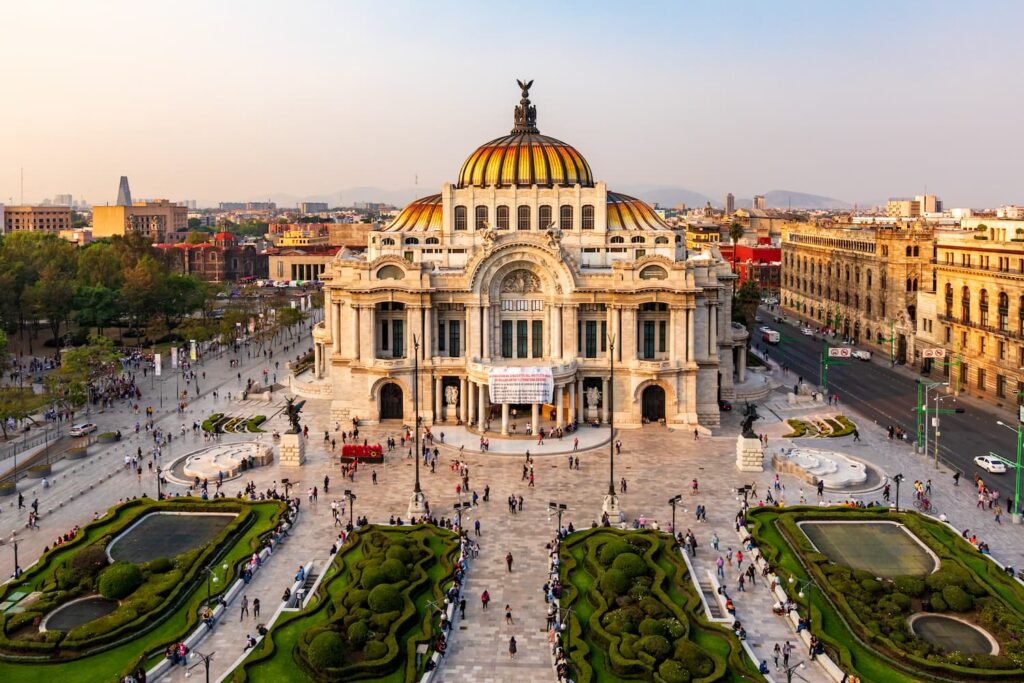
Do you feel the altitude In Mexico City?
We travel to CDMX regularly, and we’ve never really noticed the altitude in Mexico City, perhaps because we’ve experienced quite a few places in the Americas that have more extreme heights above sea level, Bolivia in particular. However, if you are sensitive to altitudes, it doesn’t hurt to be properly prepared.
Is Mexico City a high-altitude city?
In terms of capital cities, yes, Mexico City is up there with the best of them – though some way off the number-one spot held by La Paz, which sits among the clouds at 3,640 metres (11,942 feet). However, it’s not as high as other metropolitan areas in the surrounding State of Mexico, such as Toluca, Metepec, and Lerma.
What is the oxygen level in Mexico City?
The concentration of oxygen in Mexico City is about 16%, as compared to oxygen levels at sea level, which are about 20.9%. That’s a significant difference, but just under the threshold where most people begin to manifest serious symptoms, as they often do in La Paz, where oxygen levels are about 13.2%.
Is the air thinner in Mexico City?
The air is almost 25% thinner in Mexico City than it is at sea level. What that essentially means is that the higher up you go, the less dense the air is, as the oxygen molecules are more spread out. That is why you get lower oxygen levels per cubic metre at higher altitudes.
How long does it take to acclimate to the altitude in Mexico City?
Getting used to the change in oxygen density and atmospheric pressure in Mexico City shouldn’t take very long. In fact, for us, we don’t really feel any ill effects at all on landing. Even for people who are affected by the change in altitude, the majority recover from the symptoms within a day, a maximum of two.
At what altitude does altitude sickness start?
Altitude sickness can start at heights as low as 1,500 metres (5,000 feet) above sea level. What is the altitude of Mexico City? About 2,240 metres (7,350 feet), which is why some travellers feel nauseous or get headaches. However, altitude sickness usually only comes into effect when the height above sea level exceeds approximately 8,200 feet (2,500 metres).
Altitude Sickness In Mexico City: The Conclusion
Ultimately, it’s impossible to say who will suffer from altitude sickness in Mexico City. All you can do is be prepared by packing the appropriate medication and taking note of our key tips to combat the symptoms, even if it’s just through simple actions such as hydration and sleep. On the whole, however, you should feel confident that you will enjoy an altitude-sickness-free holiday in CDMX!
MORE CDMX TRAVEL TIPS:

